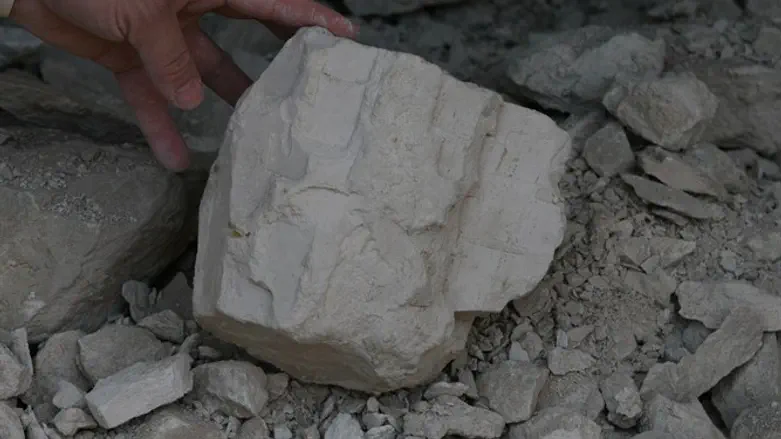
Archaeological excavations conducted in Galilee in early August, under the direction of Dr. Yonatan Adler of Ariel University, have unearthed a 2,000 year-old cave which functioned as a quarry and industrial workshop for the production of stone vessels. The large subterranean cavern, hewn into a chalkstone hillside, was discovered at a site named Einot Amitai near Nazareth in northern Israel. The cave yielded numerous remains of stone vessels in various stages of production, attesting to a thriving industry.
In ancient times, most tableware, cooking pots and storage jars were made of pottery. In the first century of the Common Era, however, Jews throughout Judea and Galilee used tableware and storage vessels made of soft, local chalkstone. The reason for this curious choice of material seems to have been religious; according to ancient Jewish law, vessels made of stone can never become ritually impure, while pottery can and there is no way to make it kosher again - and as a result ancient Jews began to produce their everyday tableware from stone.
“Stone vessels played an integral role in the daily religious lives of Jews during this period,” the end of the Second Temple period which was destroyed by Rome in 70 C.E., explains Adler, an archaeologist specializing in ancient Jewish ritual law. “It was a Jewish ‘Stone Age’ of sorts”.

The practice is mentioned prominently in the Wedding at Cana narrative in the Gospel of John, where the water-turned-to-wine is told to have been held in six jars made of stone: “Now there were six stone water jars set there for the Jewish custom of purification, containing twenty or thirty gallons each” (John 2:6).
A tantalizing link to the Gospel narrative lies in the location of the cave just south of the modern town of Kafr Kanna, identified by many scholars as the site of Biblical Cana. Adler accepts the possible connection of the cave he is excavating with the Biblical account:
“The Evangelist was clearly familiar with the fact that Jews were using stone vessels for ritual purposes” he notes. “It is certainly possible – perhaps even likely – that large stone containers of the type mentioned in the Wedding at Cana story may have been produced locally in Galilee in a cave similar to the one we are now excavating”.
Dr. Dennis Mizzi of the University of Malta, who joins Adler in directing the dig, notes however that so far remains of only mugs and small bowls have been uncovered in the cave:
“Fragments of large jars have not been unearthed” he stresses.
While fragments of stone vessels have been found in the past at numerous Early Roman period sites throughout Israel, and two workshops are known from the Jerusalem area, this is the first time that full-scale excavations are conducted at a stone vessel production site in Galilee.